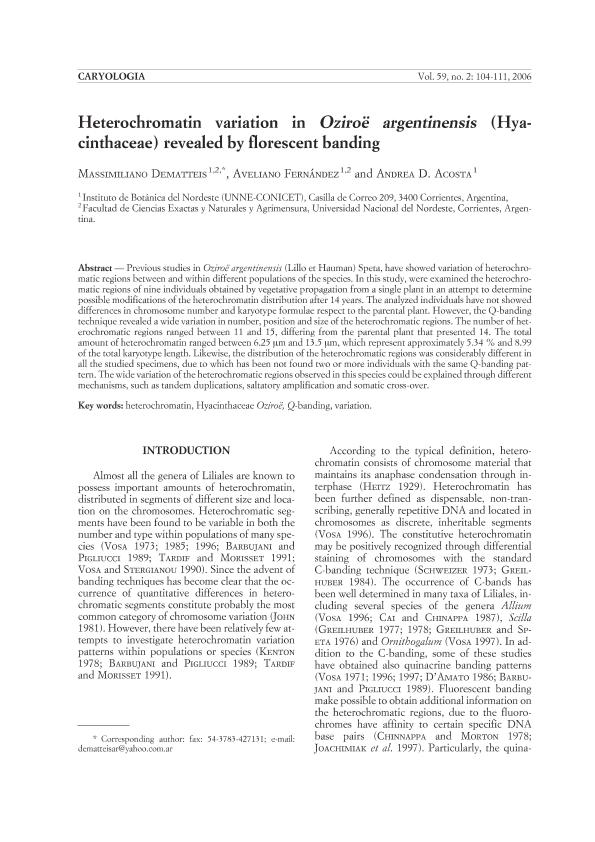Artículo
Heterochromatin variation in Oziroë argentinensis (Hyacinthaceae) revealed by florescent banding
Fecha de publicación:
01/2006
Editorial:
Univ Florence Botany Inst
Revista:
Caryologia
ISSN:
0008-7114
e-ISSN:
2165-5391
Idioma:
Inglés
Tipo de recurso:
Artículo publicado
Clasificación temática:
Resumen
Previous studies in Oziroë argentinensis (Lillo et Hauman) Speta, have showed variation of heterochromatic regions between and within different populations of the species. In this study, were examined the heterochromatic regions of nine individuals obtained by vegetative propagation from a single plant in an attempt to determine possible modifications of the heterochromatin distribution after 14 years. The analyzed individuals have not showed differences in chromosome number and karyotype formulae respect to the parental plant. However, the Q-banding technique revealed a wide variation in number, position and size of the heterochromatic regions. The number of heterochromatic regions ranged between 11 and 15, differing from the parental plant that presented 14. The total amount of heterochromatin ranged between 6.25 μm and 13.5 μm, which represent approximately 5.34 % and 8.99 of the total karyotype length. Likewise, the distribution of the heterochromatic regions was considerably different in all the studied specimens, due to which has been not found two or more individuals with the same Q-banding pattern. The wide variation of the heterochromatic regions observed in this species could be explained through different mechanisms, such as tandem duplications, saltatory amplification and somatic cross-over.
Palabras clave:
Heterochromatin
,
Hyacinthaceae Oziroë
,
Q-Banding
,
Variation
Archivos asociados
Licencia
Identificadores
Colecciones
Articulos(IBONE)
Articulos de INST.DE BOTANICA DEL NORDESTE (I)
Articulos de INST.DE BOTANICA DEL NORDESTE (I)
Citación
Dematteis, Massimiliano; Fernandez, Aveliano; Acosta, Andrea D.; Heterochromatin variation in Oziroë argentinensis (Hyacinthaceae) revealed by florescent banding; Univ Florence Botany Inst; Caryologia; 59; 2; 1-2006; 104-111
Compartir
Altmétricas




